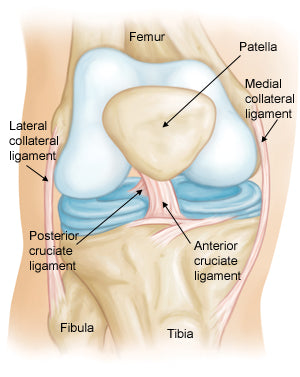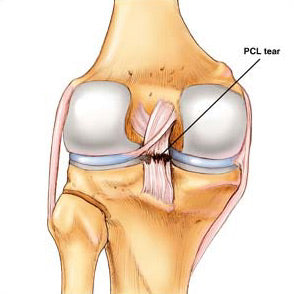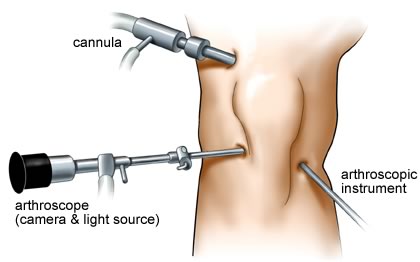PCL Tear | Torn Posterior Cruciate Ligament in Your Knee
What is the PCL?
The PCL (also known as the posterior cruciate ligament) is one of the four main ligaments in the knee. Where is your PCL located? The PCL is located in the back of the knee connecting the femur to the shin bone. BraceAbility offers treatment for many knee injuries, including PCL tears. PCL tears make up less than 20% of injuries to knee ligaments. Unfortunately, tearing of the PCL will also damage some of the other ligaments or cartilage in the knee. In some cases, the ligament can also break loose a piece of underlying bone.
The PCL is located in the back of the knee. It is one of several ligaments that connect the thighbone (femur) to the shinbone (tibia). The main function of the PCL is to keep the tibia from moving backward too far and to stabilize the knee. A PCL is less common than an ACL because the PCL is broader and stronger than the ACL.
BraceAbility offers PCL Knee Braces for all types of PCL injuries.
See the article “Posterior Cruciate Ligament” for a more detailed explanation of the location of the ligament or see the photo below.
Posterior Cruciate Ligament Tear
How do you tear your PCL? Being one of the strongest ligaments in your knee, it is important to understand that a torn PCL requires a powerful force. One of the most common causes of a torn PCL is a bent knee hitting a dashboard in a car accident or an athlete falling on a knee that is bent. In this injury, the knee is hyper flexed (bent all the way back), with the foot, held pointing downwards.

The posterior cruciate ligament can tear if and when the shinbone is struck forcefully just below the knee. Another common way in which the PCL tears is when the knee is bent and a heavy object falls on top of the knee. These injuries are most common during:
• Car Crashes. A dashboard injury occurs when the driver's or passenger's bent knee smashes against the dashboard, pushing in the shinbone backward past the knee and causing the PCL to tears.
• Contact sports. One of the most common causes of a PCL tear is athletics. Falling on the knee incorrectly while it is bent, or another athlete forcefully making contact to the knee may cause a tear in the PCL. Posterior cruciate ligament tears are especially common in Football, Soccer, Baseball, Basketball, and Skiing.
For example, if a running-back accelerates forward through the line of scrimmage and is met immediately by a surging linebacker who puts his helmet straight into the running-backs knee, a Posterior ligament tear is likely. BraceAbility offers a selection of preventative and rehabilitative football knee braces which can help players prevent PCL injuries or recover from an existing ligament injury.
The theme across all of these sports-related causes of PCL tears is that they involve a forceful shift of the tibia bone backward past the knee.
PCL Tear Symptoms & Diagnosis

- Pain. Mild to moderate pain in the knee can cause a limp, knee “giving out”, or difficulty walking.
- Swelling. Within hours of the injury, the knee will swell rapidly.
- Instability. Feeling of a loose knee and not stable when standing or walking.
Unlike an ACL tear where the person who suffers the injury often times hears a “popping” noise or sensation, a PCL tear will rarely produce such a sound. However, the symptoms of a PCL tear will include major knee instability, knee pain, swelling and decreased motion. As is the case with many PCL tears, patients often state they cannot “trust” their knee, or that it feels as if it may give out. If this complaint of instability is prevalent after the injury, surgery may be necessary.
One of the most widely used tests in determining a PCL tear is the posterior drawer test. To determine the severity of the tear, the patient lies on their back with the injured knee bent to a right-angle and foot flat on the table. The severity of the injury is determined by how far the tibia can be pushed backward by the examiner.
Types of PCL Tears
The best way to determine the severity of a PCL tear is by MRI. An MRI (Magnetic Resonance Imaging) is superior to any physical examination because it offers better soft tissue resolution and is completely non-invasive. It is highly recommended that an MRI is ordered for anyone who suspects they may have injured their PCL due to the high chance that other ligaments were injured coincidentally.
Similar to many other injuries, PCL tears can be classified into 4 different groups.
- Healthy PCL: In this case, the ligament may be stretched excessively causing minor pain and discomfort but is still intact and able to keep the knee joint stable.
- Grade 1 Tear: There is a partial PCL tear.
- Grade 2 Tear: The ligament is partially torn and is looser than Grade 1.
- Grade 3 Tear: The posterior cruciate ligament is completely torn and the knee becomes unstable.

BraceAbility offers numerous braces for recovering from torn ligaments in the knee.
Knee Braces for PCL Tear Treatment
BraceAbility has many braces and supports for preventing & treating PCL Tears. Here are a couple of our most popular options.
One of the highest recommended braces for PCL recovery is the Functional Knee Brace for Ligament Tears. This is considered one of the best Post-Op braces on the market because of the lightweight, strong aerospace-grade aluminum frame. This brace provides excellent low-profile support well suited for a torn PCL (or other ligament injuries) and as a PCL sports brace for support as one gets back to athletic activity. This knee brace for a PCL tear is also a great option even if surgery is not performed. Being a functional knee brace, it works perfectly to keep the knee joint moving and strong if only a minor tear is present.
One of the best braces available for torn PCL recovery is the Knee Ligament Support Brace. This brace offers supreme versatility in both shape and function. The heat-moldable, carbon frame accommodates to changes in leg shape during recovery, and the Accutrac range-of-motion hinges provide flexion and extension control.
Even if edema occurs in the knee during rehabilitation, the heat-moldable frame will adapt to those changes by shaping to the leg to provide maximum stability. Gel-Fit condylar pads improve suspension and make this brace comfortable even when the knee is still tender following surgery.
If the ligament is partially torn or severely sprained, a functional knee brace is a perfect treatment for a PCL tear. A functional PCL knee brace allows the patient to continue to move freely and avoid surgery altogether. PCL repair from surgery can be a long, painful and expensive process; fortunately, BraceAbility offers a wide variety of functional knee braces to treat a torn PCL.
BraceAbility offers the best knee braces for PCL injuries and ligament tears.
PCL Surgery & Reconstruction
If your PCL injury is severe enough, surgery may be necessary. Your physician will determine whether or not the injury requires surgery via an MRI or Posterior Drawer test. When the PCL tear is severe, the patient must be operated on to recover function and resume activity in sports. If the patient is an athlete and wishes to recover fully for their desired sport, surgery is almost always performed. The exception to this would be if the athlete only sprains or strains their PCL. If the PCL is still intact, a functional knee brace would suffice.
The most common way of performing PCL surgery is arthroscopically. The surgeon inserts a thin tube into the knee which contains a light and a camera through a small incision. The surgeon will also make several other small incisions around the knee to allow room for other surgical instruments. General anesthesia is almost always used to keep the patient comfortable and pain-free during surgery. On average, PCL reconstruction surgery will take about 2 hours

Another way in which a torn PCL is repaired is by an operation called Open Knee Posterior Cruciate Ligament Reconstruction. This approach is most times used when multiple ligaments have been damaged and the surgeon needs more space to reconstruct. This surgery does, however, have more risks and a longer recovery time.
Speak with your physician to determine the best option for your PCL surgery. After surgery, you will need to wear a post-op knee brace or knee immobilizer to restrict movement and allow your ligaments to heal properly.
PCL Rehab and Exercises
After surgery, the general rule to abide by is once the swelling has subsided and the patient is able to put approximately ½ of their body weight on that leg, rehab should be started. Below is a list of PCL strengthening exercises you can do by yourself at home to help get that knee back to 100%. Similar to recovery from an ACL Tear, Torn PCL recovery is not a short process and may be frustrating at times but it’s important to remember full recovery is possible.
Below is a list of exercises that are perfect to do on your own without the supervision of a physical therapist. Before you begin these exercises, it is very important you are cleared by a medical professional to ensure you do not re-injure your knee. During these exercises, it is recommended that you wear a knee sleeve for extra support.
- Quad sets: Sit on the floor with your injured leg straight and your other leg bent. Press the back of the knee of your injured leg against the floor by tightening the muscles on the top of your thigh. Hold this position 10 seconds. Relax. Do 2 sets of 15.
- Seated quad sets: Sit in a straight-back chair with your injured knee bent at a 90-degree angle. Try to tighten the top of your thigh muscles without moving your leg. Hold for 10 seconds. Do 2 sets of 15.
- Straight leg raises: Lie on your back with your legs straight out in front of you. Bend the knee on your uninjured side and place the foot flat on the floor. Tighten the thigh muscle on your injured side and lift your leg about 8 inches off the floor. Keep your leg straight and your thigh muscle tight. Slowly lower your leg back down to the floor. Do 2 sets of 15.
- Wall squat with a ball: Stand with your back, shoulders, and head against a wall. Look straight ahead. Keep your shoulders relaxed and your feet 3 feet from the wall and shoulder's width apart. Place a soccer or basketball-sized ball behind your back. Keeping your back against the wall, slowly squat down to a 45-degree angle. Your thighs will not yet be parallel to the floor. Hold this position for 10 seconds and then slowly slide back up the wall. Repeat 10 times. Build up to 2 sets of 15.
- Step-up: Stand with the foot of your injured leg on a support 3 to 5 inches high (like a small step or block of wood). Keep your other foot flat on the floor. Shift your weight onto the injured leg on the support. Straighten your injured leg as the other leg comes off the floor. Return to the starting position by bending your injured leg and slowly lowering your uninjured leg back to the floor. Do 2 sets of 15.










